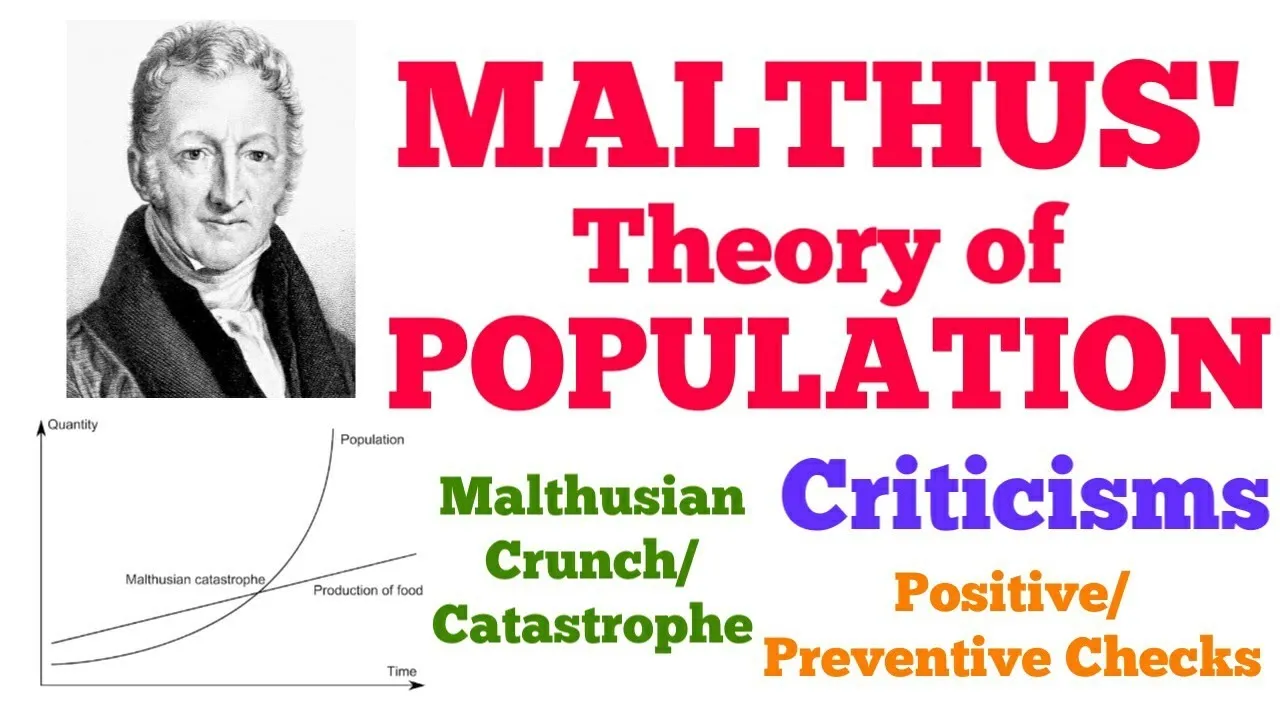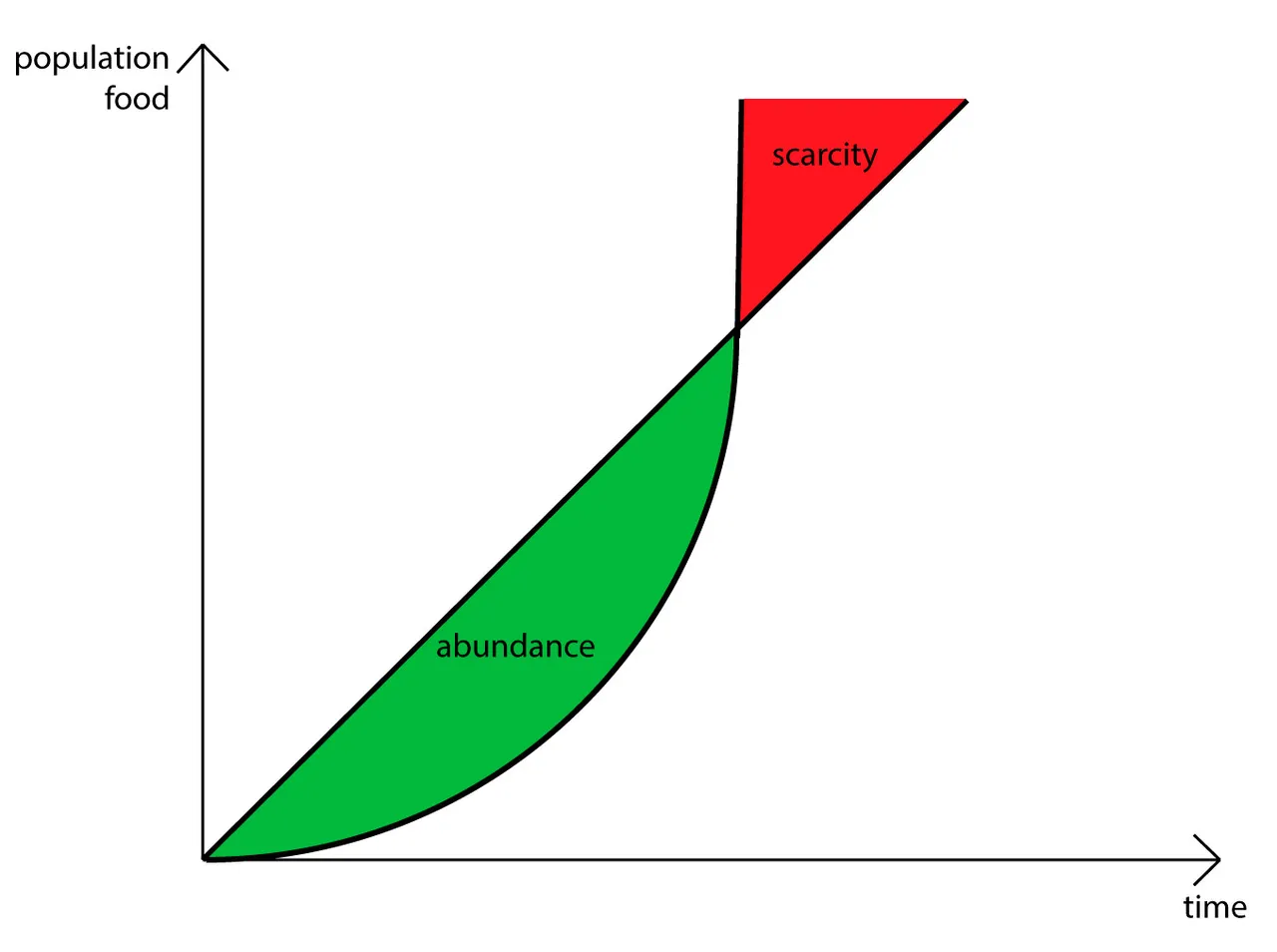INTRODUCTION
Thomas Malthus was a influential 18th Century economist among other things. His most important contribution to the field of Economics was a book published in 1798 entitled "An Essay on the Principle of Population". [Malthus, T. " An Essay on the Principle of Population As It Affects the Future Improvement of Society, with Remarks on the Speculations of Mr. Goodwin, M. Condorcet and Other Writers (1st ed)". https://archive.org/details/essayonprincipl00malt (Accessed July 7, 2021)].
MALTHUSIAN THEORY
Theoretically, Malthus' findings are simplistic. To summarize: "Malthus specifically stated that the human population increases geometrically, while food production increases arithmetically. Under this paradigm, humans would eventually be unable to produce enough food to sustain themselves". [Kagan, J. "Thomas Malthus". https://www.investopedia.com/terms/t/thomas-malthus.asp. (Accessed July 9, 2021)]. Graphically, this proposition can be illustrated as follows:
When the crisis point is reached (where population exceeds resources) Malthus theorized two checks for the growth of population so as to prevent scarcity (poverty, premature death, etc.). The first check on population growth concerned 'preventative checks' which included delaying legal marriages, abstinence from procreation, birth control, and restrictions on marriage to those deemed by the government to be unfit. Malthus' second check on population growth concerned 'positive checks' which included events resulting in a shortening of the lifespan such as war, famine, plague, poor health and deteriorating economic conditions.
The basic Malthus theory is summarized in the following chart:
"This theory was criticized by economists and ultimately disproved. Even as the human population continues to increase, technological developments and migration have ensured that the percentage of people living below the poverty line continues to decline. In addition, global interconnectedness stimulates the flow of aid from food-rich nations to developing regions." [Kagan, supra.].
PRESENT DAY APPLICATIONS OF MALTHUSIAN THEORY?
In the preceding paragraph, Kagan concluded that Malthus' Theory was ultimately disproved. For the most part, his theory is inapplicable to the current economic structure of the world order. But it must be first noted that Malthusian Theory did post a come back in the 20th Century with the development of Keynesian economics.
In viewing this applicability to the current world economic state, Malthus' Theory must be premised on his thoughts about the population growth effect upon workers' incomes (per capita income). He posited that excessive population growth swelled the labor force and thus with a glut of labor, wages were driven down and ultimately poverty ensued. Utilizing this, we can stretch Malthusian Theory to apply in limited circumstances, sectors, and geographic areas within today's world economy.
It is a firmly held construct that poorer countries are more likely to suffer negative consequences as a result of overpopulation. Poorer countries tend to exhibit high growth rates of population. These poorer countries are as well less likely to be able to trade within the world markets to obtain needed resources. And most of these poorer developing countries rely on agriculture where they have greater shares of natural resource rents included in their GDP thereby creating a negative effect on per capita income (hereunder creating the Malthusian crisis). Under this strict constraint it may be said that Malthus' Theory is applicable in present day application in poorer nations heavily reliant upon agriculture and poverty is on the rise.
However, as noted, the applicability of this theory herein is had under strict constraints. Whether Malthusian effects are demonstrated in poorer countries is at best questionable and subject to varying interpretations as to occurrence and degree. It is of significant import in this consideration that there exist many factors (such as international aid and assistance for example) that can dispel the negative effects of population growth. As such, not all poorer countries are doomed to meet fate with the Malthusian crisis as their population grows.


